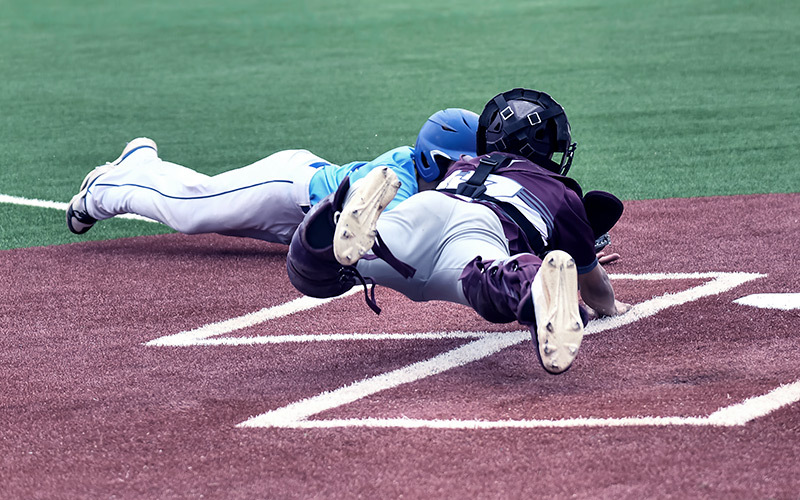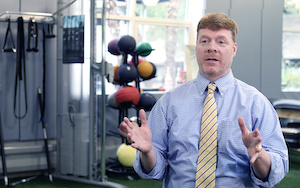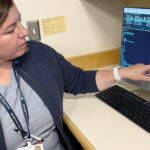Sports medicine helps keep athletes in the game

Sports medicine specialist Dr. William Meehan sees a lot of sports injuries: everything from tennis elbow to concussions to anterior cruciate ligament (ACL) injuries. But when he talks about sports, he typically leads with how sports benefit young athletes.
“There’s so much publicity about injuries and risk,” says Dr. Meehan, a physician in the Sports Medicine Division at Boston Children’s. “I don’t want people to lose sight of the fact that sports are good for kids.”
Helping athletes stay in the game is one of the hallmarks of sports medicine. Yet many parents and athletes don’t fully understand what sports medicine is. We asked Dr. Meehan to explain.
What is sports medicine?
“Sports medicine focuses on the diagnosis and treatment of sport-related injuries and other conditions specific to athletes,” says Dr. Meehan.

If an athlete is injured, sports medicine focuses on treatment and rehabilitation so athletes can return to their sport. If an athlete has a condition like diabetes or asthma, sports medicine physicians understand how these conditions can affect athletes differently than nonathletes, and how to tailor their treatment. Sports medicine specialists can also help prevent athletes from getting injured in the first place.
To address every aspect of an athlete’s physical and emotional health, the sports medicine team at Boston Children’s has a wide variety of specialists. In addition to physicians, the team includes dietitians, injury prevention specialists, sports psychologists, mental skills specialists, athletic trainers, podiatrists, physical therapists, nurse practitioners, physician assistants, and certified strength conditioning specialists. For serious injuries that require surgery, the team works closely with orthopedic surgeons who also specialize in treating athletes.
“It’s a massive team,” says Dr. Meehan. “Very few athletes will need all of these specialties. But when an athlete comes to us, we have the skills to address their needs.”
What role do an athlete’s goals play in sports medicine?
“An athlete’s goals determine almost everything,” says Dr. Meehan. For instance, a hockey player with multiple shoulder dislocations may benefit from surgery to stabilize the shoulder and make it less prone to dislocation. But having surgery will force them off the ice for months, and continuing to play in the short term may not increase their risk of further injury. “If that athlete has been training all season and the Beanpot is coming up in three weeks, I might say,’ let’s get you through that tournament and schedule the surgery afterward.’”
Many sports injuries can be treated in a variety of ways. Knowing what’s most important to the athlete helps us determine the best treatment for them.”
He might make a different recommendation for an athlete with the same injury but different goals. “Many sports injuries can be treated in a variety of ways. Knowing what’s most important to the athlete helps us determine the best treatment for them.”
Is it possible to prevent sports injuries?
Thanks to years of research and working with athletes, sports medicine specialists know what factors increase the risk of sport-related injuries. An injury may stem from the athlete’s technique, their anatomy, or how they train — to name a few risk factors.
The Micheli Center for Sports Injury Prevention, part of the Sports Medicine Division, uses this knowledge to reduce such risks. Injury prevention specialists gather information about an athlete’s training schedule, their diet, the sports they play, and any past injuries. They also analyze the athlete’s movement patterns and anatomy. “Based on that information, we can determine which injuries you’re at highest risk of sustaining. And we can give you a prescription to decrease your risk,” says Dr. Meehan, who directs The Micheli Center.
The Micheli Center for Sports Injury Prevention offers a variety of services to help reduce athletes’ risk of sports injury. Many athletes treated in the Sports Medicine Division work with trainers at The Micheli Center as part of their rehabilitation.
Some injury prevention prescriptions are simple: A brace can stabilize a vulnerable area, for instance. Others take more work, such as when one muscle group is significantly stronger than an opposing muscle group.
“The ACL is a classic example,” says Dr. Meehan. “If your quads are significantly stronger than your hamstrings, you’re at increased risk of a non-traumatic ACL tear — especially female athletes, whose risk can be six times greater.” In this case, an athlete may have to commit to weeks or months of focused ACL injury prevention exercises. “It’s not easy, but it’s well worth it.”
An athlete’s training regimen, such as the number of pitches a baseball player throws per week, can also contribute to injury. “In this case, we know what needs to change, but sometimes it’s hard to get athletes to cut back.”
When should an athlete see a sports medicine physician?
Dr. Meehan suggests athletes with sports injuries start with their pediatrician or primary care provider (PCP). “Most PCPs have a good sense of when an injury needs to be seen by a sports medicine specialist and can refer you to someone who specializes in your type of injury.” If an athlete is in chronic pain or has a complex injury, ask for a referral to a sports medicine specialist.
For athletes worried about getting injured, Dr. Meehan recommends working with a sports injury prevention specialist with experience working with children, adolescents, and young adults. “An injury prevention specialist will look at the factors that could increase your risk of injury and help you minimize them.”
Learn more about the Sports Medicine Division and The Micheli Center for Sports Injury Prevention and book an appointment.
Related Posts :
-

Ask a sports medicine specialist: Why are ACL tears so common among female athletes?
When an athlete is sprinting after an opponent who suddenly stops or changes direction, their anterior cruciate ligaments (ACLs) make ...
-

Forging a path back to school after orthopedic trauma
Orthopedic trauma can force children to miss school, sometimes for an extended period. But even when patients have regained enough ...
-

Jackie’s dreams of playing professional soccer back on track after ACL surgery
From her dorm in Newcastle, England, Jackie Zapata can hear fans roaring in the soccer stadium a few blocks away. ...
-

What orthopedic trauma surgeons wish more parents knew about lawnmower injuries
Summer is full of delights: lemonade, ice cream, and fresh-cut grass to name a few. Unfortunately, the warmer months can ...





